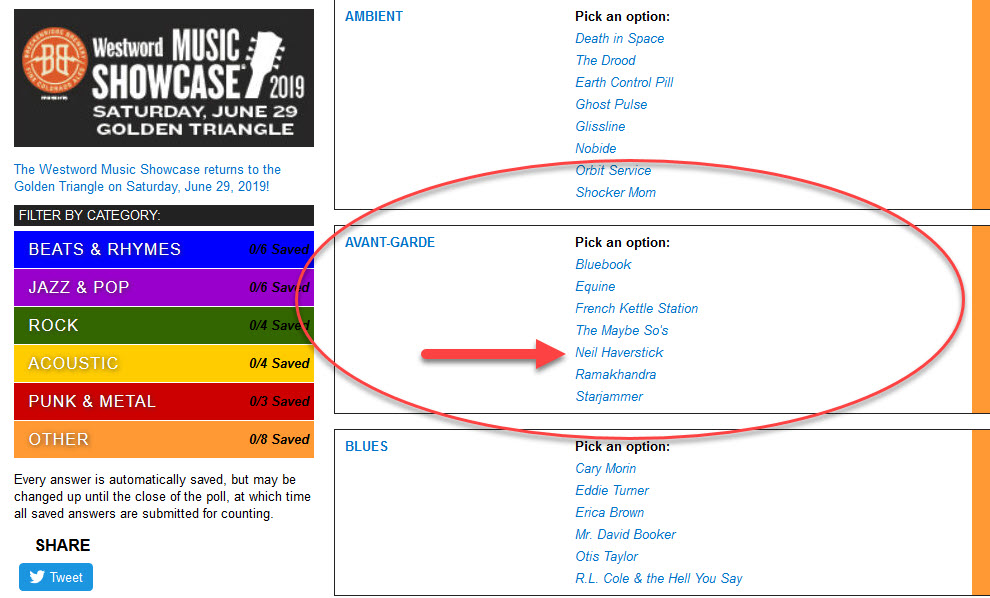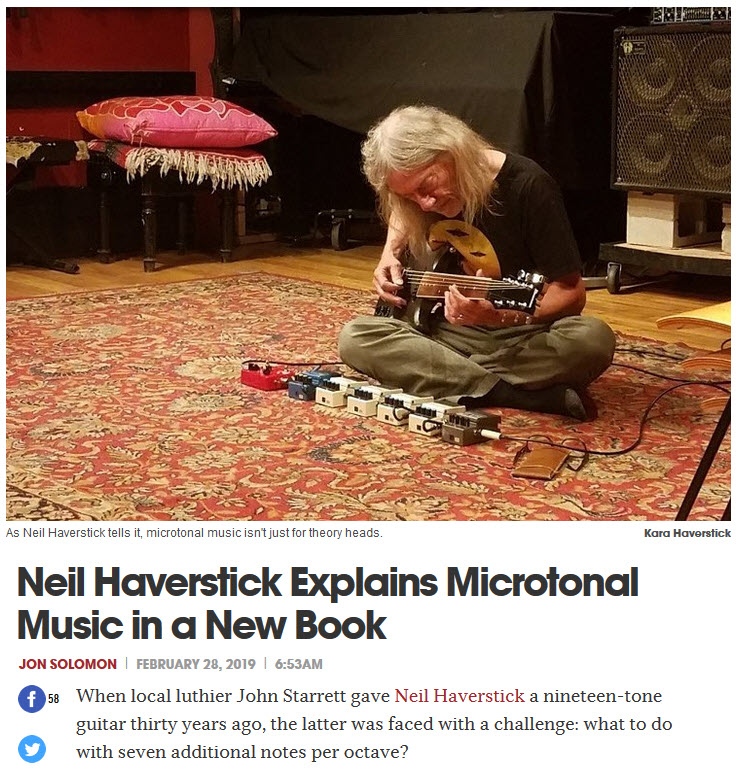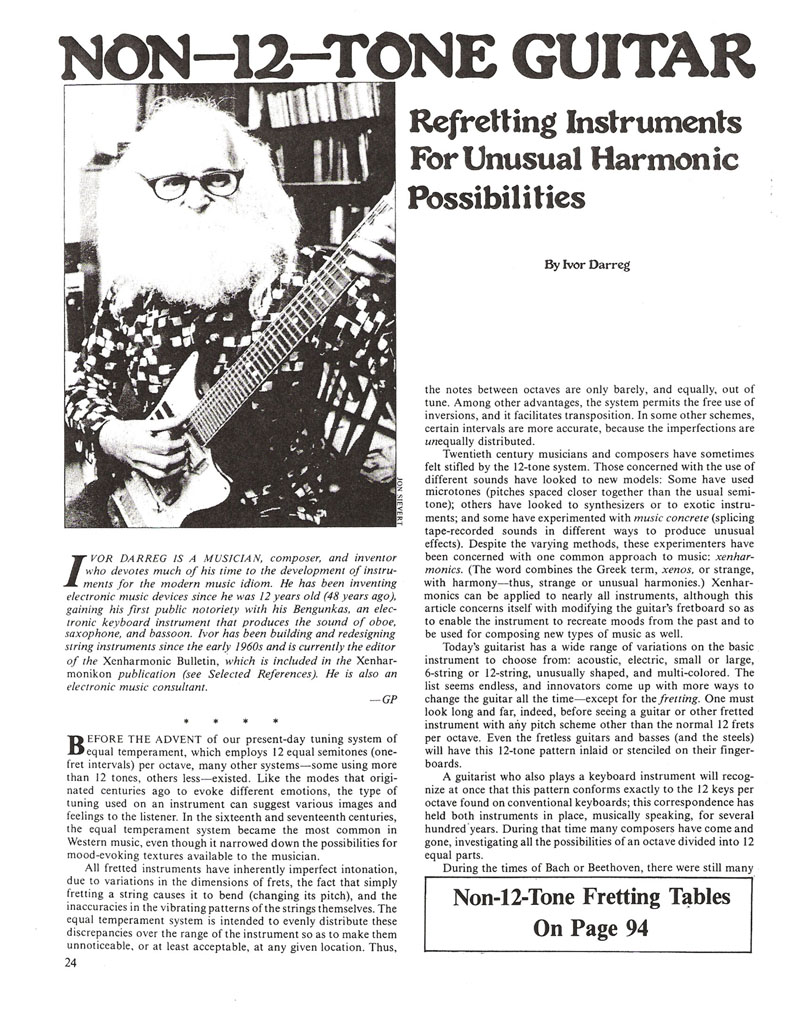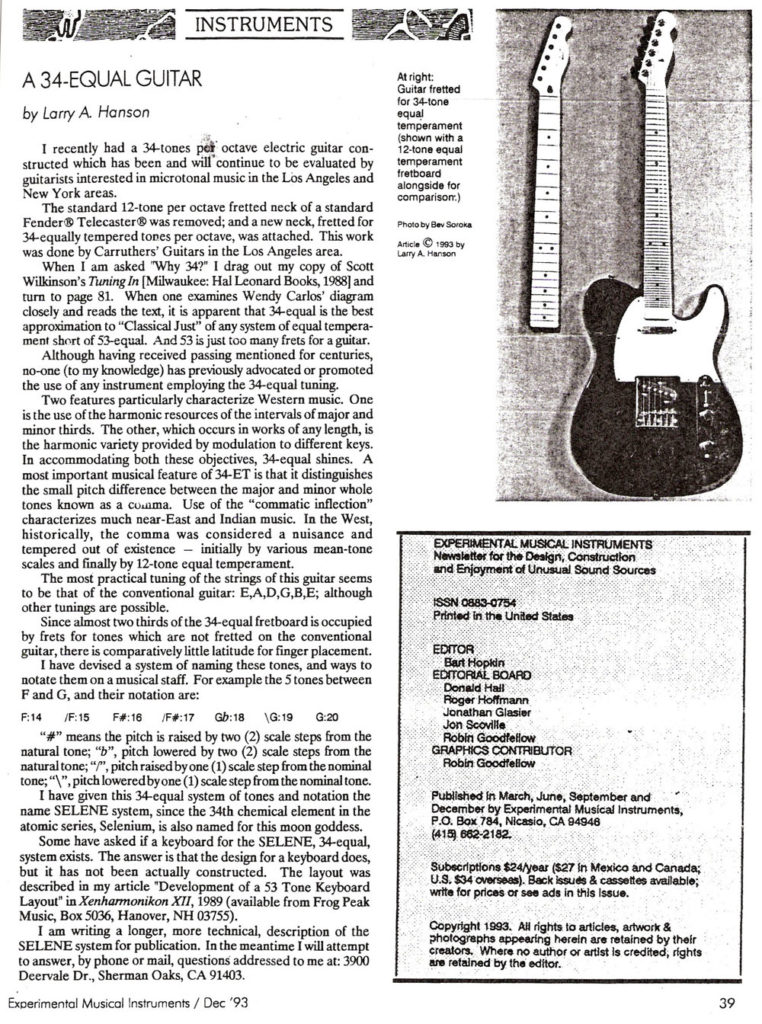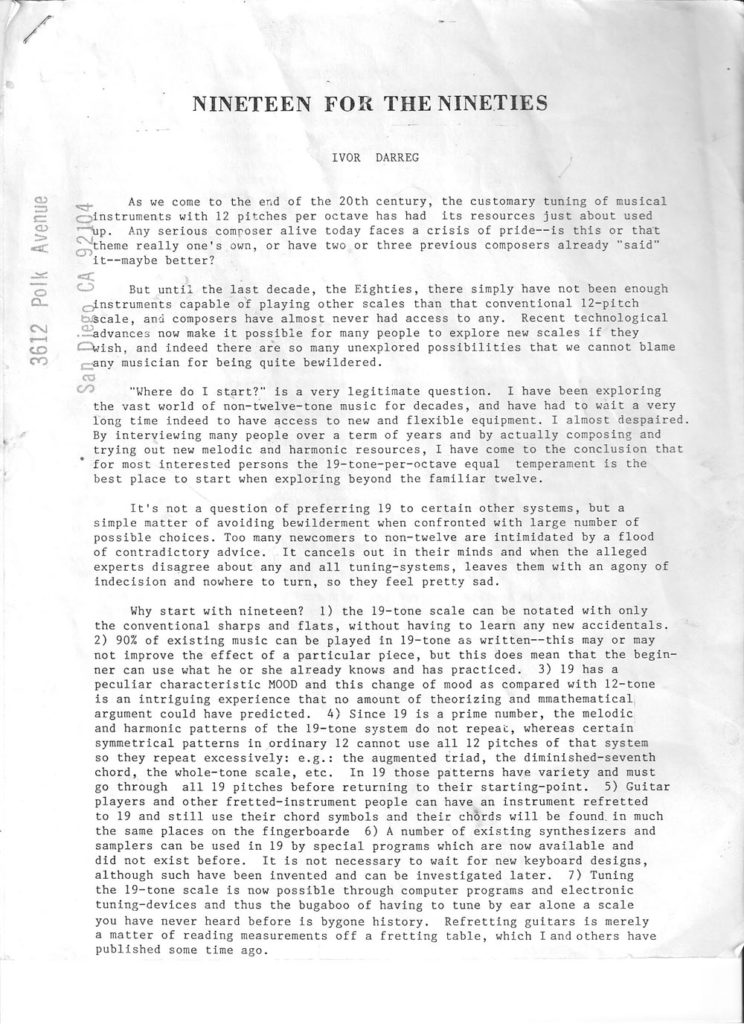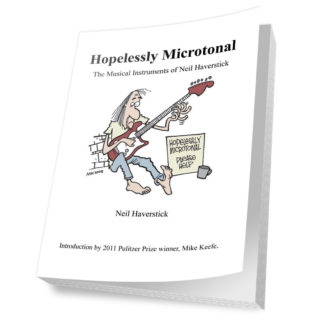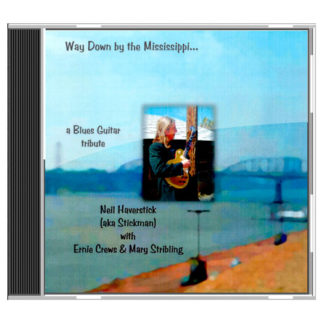In all my years of playing, I have found the least understood subject to be that of tuning. Not just tuning an instrument to sound good, but: WHY are the notes on a piano (or guitar) tuned in the arrangement that they are, namely, what we call 12 tone equal temperament? Equal temperament means, simply, that every note is exactly the same distance from each other…a convenient way to measure this distance is CENTS; 100 cents is C to C#, one key on a piano, or one fret on a guitar. (there are 1200 cents in the 12 tone octave). But, the 12 tone system we all use is actually a fairly new kid on the tuning block, so to speak…throughout history, most cultures throughout the world have used systems with smaller intervals than 100 cents, and this is where the term microtone comes into play. And Western musicians have also used temperaments with more (or less) notes than 12 tone temperament; some popular tunings are 17, 19, 22, 24, 31, 34, 53, and 72 notes per octave; 19 tone temperament, for example, has 63 cents per note; 34 tone has 35 cents between notes. Charles Ives and Bela Bartok both used quartertones in pieces (24 tones/octave), and Julian Carrillo had a 96 tone system…yow.
Continue reading What is Microtonality? An Introduction

